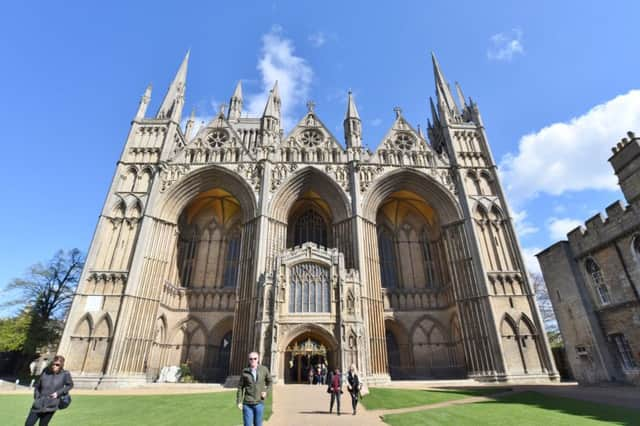Cleric inspired the end of slavery


There are always new things to discover about its history, as there are about the city of Peterborough in general.
I’m always astonished how many links to events in the nation’s history we have with our rich heritage, and stumbled across one recently I wasn’t previously aware of.
Advertisement
Hide AdAdvertisement
Hide AdThis is the story of Dean Peckard, buried in the New Building at the east end of the Cathedral.
An unremarkable grave slab simply records ‘Peter Peckard, Dean of this Church and Master of Magdalen College, Cambridge. Died December 8th 1797 Aged 80’.
What it fails to say is that Peter Peckard was the intellectual father of the movement for the abolition of the Slave Trade.
Mention the abolition movement and most people will think of William Wilberforce, or perhaps Thomas Clarkson, the latter hailing from Wisbech. However, the man who provided them with the basis for their arguments was Peter Peckard.
Advertisement
Hide AdAdvertisement
Hide AdPeckard was originally from Welbourn in Lincolnshire, graduated from Oxford University and was ordained into the Church of England. From 1760 until his death he was Rector at Fletton in Peterborough, and for a time he was also Vicar of Yaxley. He held a number of other posts, including being an army chaplain for the Grenadier Guards, serving with them on campaign in Germany.
Throughout his life Peckard was an outspoken liberal, and by the 1770s spoke out in his sermons against the Slave Trade, something at the time most people regarded as perfectly normal and legitimate – if they thought about it at all. At this time thousands of Africans were still being taken each year as part of the Transatlantic Slave Trade and transported to lives of misery on plantations in the New World, if they survived the journey.
In 1778 Peckard published a pamphlet anonymously entitled ‘Am I not a Man and a Brother?’ articulating the arguments against the evils of slavery.
The title of the pamphlet and the image on its front page became iconic for the abolitionist movement. They were even used on china produced by Josiah Wedgewood promoting the anti-slavery cause.
Advertisement
Hide AdAdvertisement
Hide AdPeckard became master of Magdalen College in Cambridge in 1781, rising to become Vice-Chancellor three years later.
That year he started a competition for students to write an essay (in Latin) on the subject of ‘Is it lawful to enslave the unconsenting?’
The first prize winner was Thomas Clarkson, then an undergraduate, who was so inspired that it set him on his path to become one of the leading activists in the abolitionist movement.
In 1792 Peckard was appointed as Dean of Peterborough Cathedral, a position he retained until his death five years later. He died fifteen years before his dream became true and the Slave Trade was outlawed in 1807.
If you pop into the Cathedral, do see if you can find his grave, and spare a thought for this unsung hero!